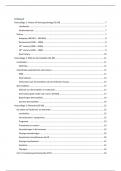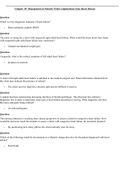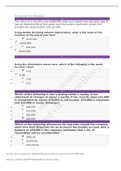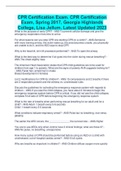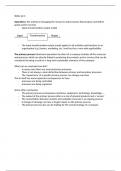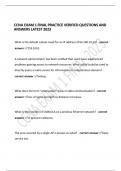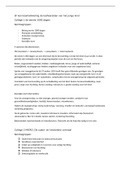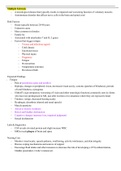Notes de cours
Aantekeningen Klinische Neuropsychologie deeltentamen 1 (2024) - UvA, Psychobiologie
- Cours
- Établissement
- Book
In dit document vind je mijn uitgebreide aantekeningen van de colleges van deeltentamen 1. De aantekeningen zijn in de taal waarin het college is gegeven. Als je dit document koopt in 2025 of later, kan ik natuurlijk niet garanderen dat de colleges dezelfde inhoud bevatten.
[Montrer plus]
